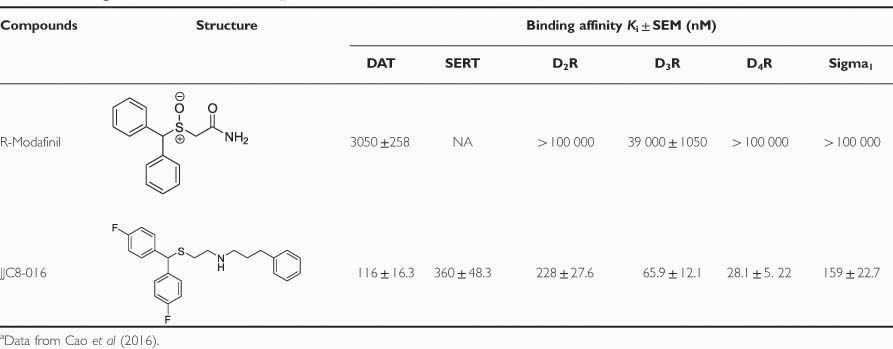Cocaine is a powerfully addictive stimulant drug that acts by blocking the dopamine transporter (DAT), resulting in a rapid spike in the neurotransmitter dopamine. This increase in dopamine in the nucleus accumbens, a brain region associated with reward, causes the user to feel euphoric, energetic, talkative, mentally alert, and hypersensitive to sight, sound, and touch. In some cocaine users, these powerful reinforcing effects can lead to abuse and addiction. Currently, there are no medications approved by the Food and Drug Administration (FDA) to treat cocaine use disorders. However, scientists have developed novel atypical DAT inhibitors that bind to the DAT and block cocaine from binding there, but do not have cocaine-like rewarding properties of their own.
Modafinil, a FDA-approved medication used to treat narcolepsy, has been investigated for its potential as a treatment of cocaine use disorders. Scientists supported by the National Institute on Drug Abuse developed a unique modafinil analogue called JJC8-016, which is an atypical DAT inhibitor. Preclinical findings suggest that JJC8-016 has no or low cocaine-like abuse potential and significantly inhibits cocaine-taking and cocaine-seeking behavior when rats are pretreated with the compound. Additionally, JJC8-016 acts on other receptors that may contribute to its unique behavioral profile and medication development potential, providing leads for future drug development.
Study:
- Zhang, H. et al. The Novel Modafinil Analog, JJC8-016, as a Potential Cocaine Abuse Pharmacotherapeutic. Neuropsychopharmacology.

